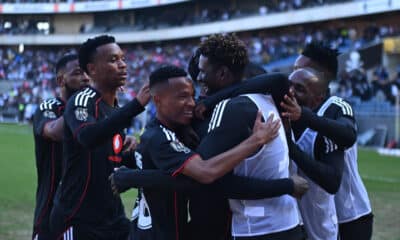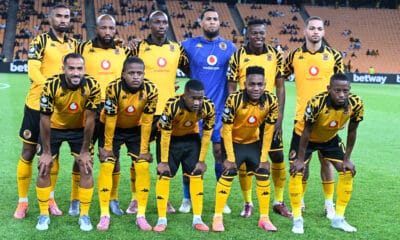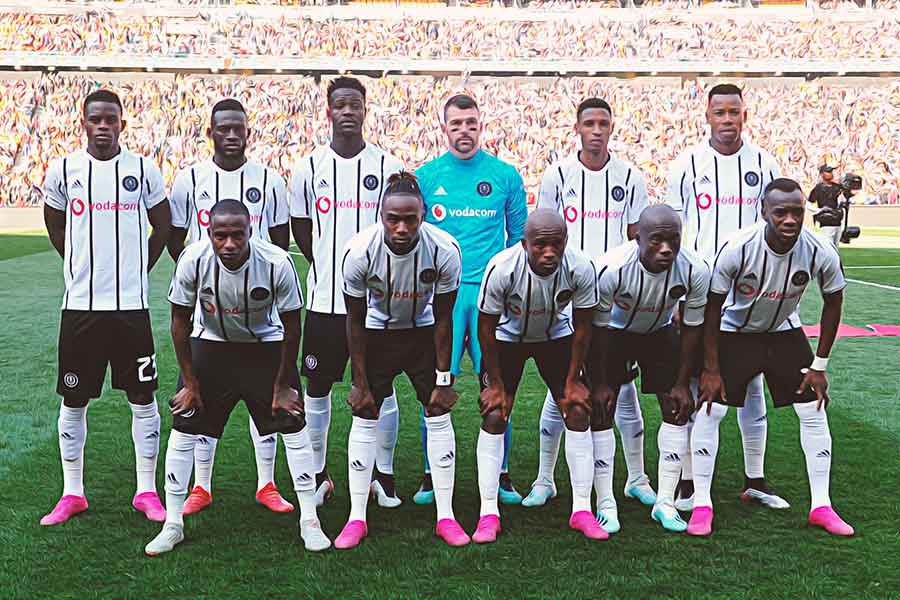
30 July 2019, by: Grant de Smidt
ORLANDO PIRATES PSL 2019/2020 PREVIEW
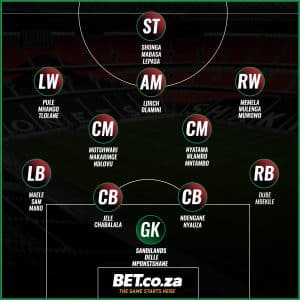
*Accurate up to 29 July
Pirates have had another busy transfer window. They have let go of more than a dozen players, but of those let go, only Marshall Munetsi was a regular. They have brought in a considerable amount of younger players with only a handful of years of experience in the PSL, plus Gabadinho Mhango and Fortune Makaringe to contribute immediately.
Also arriving is French goalkeeper, Joris Delle and Zambian winger, Kaunda Muwowo. The squad looks significantly stronger, younger and more vibrant going into the new season. The removal of big characters and dressing room influences (Thabo Matlaba, Mpho Makola, Thamsanqa Gabuza) should mean an even better team spirit and new leaders emerging.
In the two seasons since Milutin Sredojevic took over as head coach (with excellent assistants in Rhulani Mokwena and Fadlu Davids) Pirates have illustrated incredible flexibility in terms of team shape. They have played with very attacking fullbacks at times and no fullbacks at other times. Back threes, midfield diamonds, two numbers tens and sometimes two genuine strikers have all been observed. Despite all these changes, the style of play does not alter drastically from their high-possession, build-up play focused “game model”.
Perhaps the best way to look at their different formations is in how many attacking players it allows them to get onto the pitch. In a 3-4-2-1, there is space for two number tens and one striker. A 4-2-3-1 has space for three attacking midfielders behind a single striker. Their awkward 3-2-2-3 (often described as a “3-box-3” and undoubtedly inspired by Manchester City’s use of the shape) has room for five attacking players: two wingers, two number tens and one striker.
With the plethora of attacking talent at their disposal this season as Luvuyo Memela is fit and both Mhango and Kabelo Dlamini shining in preseason, we may see more of that shape or other variants that allow five forwards to start games.
The one major positional alteration last season saw Thembinkosi Lorch play centrally more often (instead of wide) and that resulted in a genuine breakout season for the player. He could make inside-to-outside runs and get beyond Shonga into scoring positions.
In the screenshot below, Pirates are using their “3-box-3” formation with two wingers, one striker and a “box” comprising two number tens in Memela and Lorch and two holding midfielders.
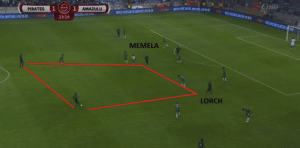
Over the past season, Pirates struggled against teams who sat back and let them have possession. Although Bucs had high possession numbers, they draw a large number of games and often had trouble penetrating those types of ultra-defensive opponents.
Micho’s side also faced teams who used man-marking on their key creative players, with Xola Mlambo, for example, finding himself closely followed after an influential start to last season. Disrupting Pirates’ build-up play often saw the side lose some momentum and confidence.
The club have looked to address these issues in adding a variety of extra weapons in the transfer market. Both Makaringe and Siphesihle Ndlovu are very good dribblers in central areas, which will help Pirates to eliminate opponents, bypass man-marking and get the ball into the final third more regularly.
They also added a target man in Tshegofatso Mabasa, who is strong with his back to goal and will provide a plan B when teams are camped inside their own box. Having more goalscorers in the squad should also increase competition for Justin Shonga and Augustine Mulenga, both of whom should have registered significantly more goals last season based on their chances missed.
Makaringe’s arrival will also lower the reliance on Ben Motshwari for his athleticism in closing down and stopping opposition counter-attacks. Both Mlambo and Musa Nyatama are excellent deep-lying playmakers but lack the athleticism to make Bucs dynamic and proactive defensively.
Dlamini is also a very useful player to give variety to the side’s build-up play. At Celtic, he would drop deep to create a spare man, making it difficult for opponents to press in midfield. Pitso Mosimane described this after playing Celtic, saying: “Not many teams can bypass our pressing. We tried to press. We tried to deal with Lantshene Phalane and the number 4, Kabelo Dlamini.”
Pirates’ squad looks very strong this season. Their variety in attack is much-improved and their midfield depth is extraordinary. At right-back, they used five different players last season but have now offloaded three of those and settled on the most reliable two. Extra cover for Innocent Maela has come in, which could allow the latter to give cover in central defence in a back four or play on the back of a back three more often.

Perhaps the problem areas for Pirates will be in central defence – where their first-choice duo are both 32 years old and slow on the turn – and in goal. Happy Jele and Alfred Ndengane are excellent in duels and defending their box, but neither has the pace to allow the side to defend high up the pitch.
There is also a serious lack of cover in that area with Justice Chabalala completely out of favour last season (zero appearances) and Ntsikelelo Nyauza losing his place after conditioning problems. There is still time to add at least one centre back to the squad in the window – failing to do so would make any injuries potentially very damaging.
In goal, Wayne Sandilands ended the season strongly but is still prone to mistakes and dramatic losses of confidence, so Joris Delle could soon become the first choice. Being capable and confident in playing out from the back is crucial in these positions (centre back and goalkeeper) but none of the starting players nor the backups looks 100% suited to this.
Pirates are likely to be less predictable tactically this season, whilst adding dynamic, multi-functional players should see the side play at a higher tempo with and without the ball.
The depth and options within the squad give the coach all manner of ways of setting up in domestic and continental action, as well as different ways to chase games so they can convert some of their draws into victories.
There is expected to be less reliance on Lorch in attack this season, but instead, Pirates are going to need stellar seasons from their first choice centre backs.
MORE SOCCER























